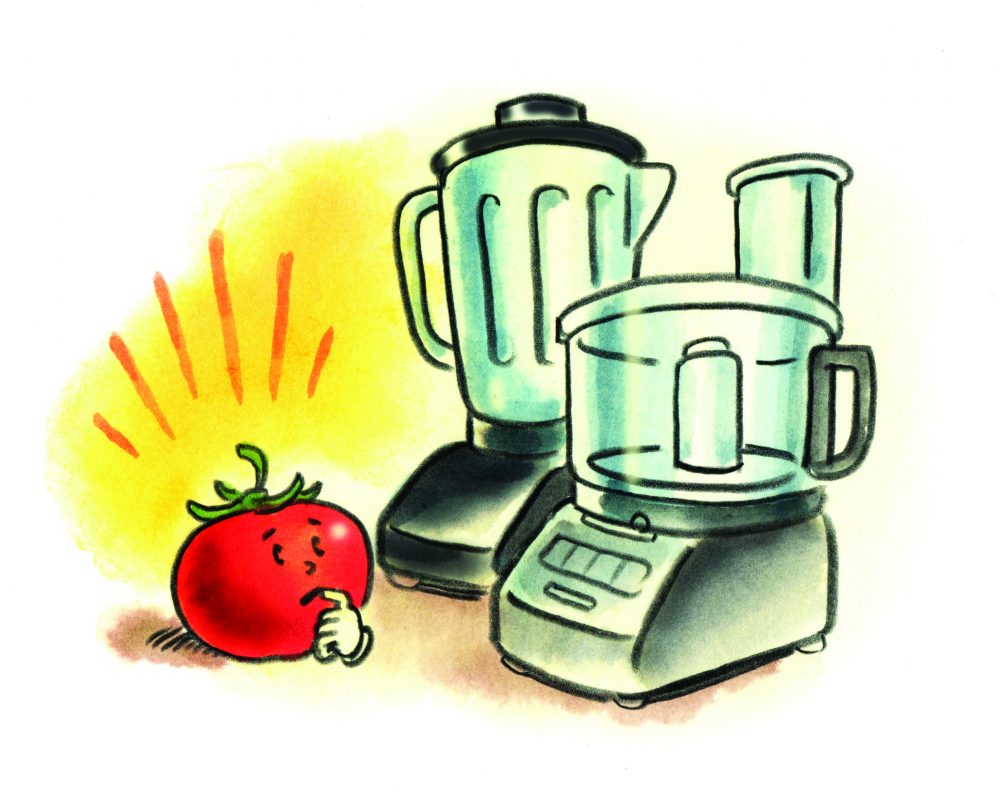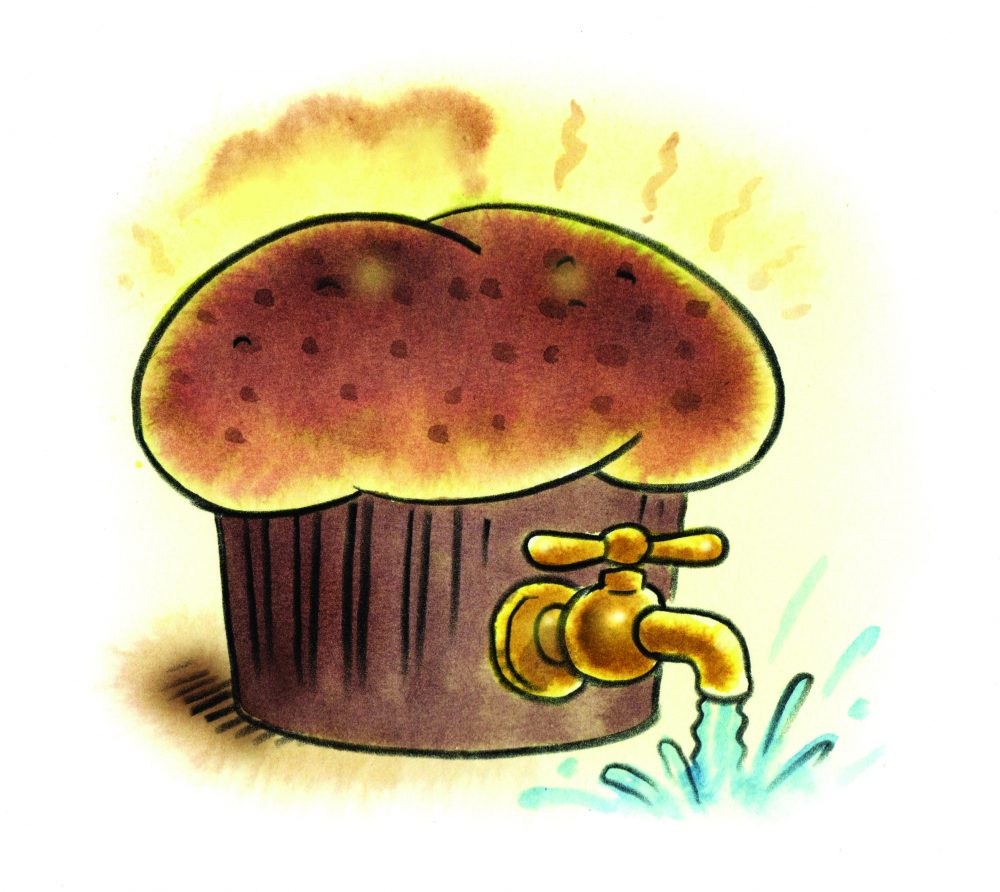
The Best Tool for the Job?
Food processors and blenders often serve similar functions in the kitchen. Which prompted Colin Knight, of Miami, to ask how to know when to use one or the other. And do you really need both?
Blenders and food processors both rely on spinning blades to break down ingredients. But the design of the container changes how those blades interact with food. The tall, tapered jar of a blender creates a vortex effect ideal for liquefying, making blenders best for producing velvety-smooth sauces, soups and purees. Meanwhile, the squat bowl of a food processor is best for shredding foods without pulverizing them, perfect for chopping nuts, making chunky sauces or even kneading doughs. To see whether we truly needed both, we ran several tests. First, we made smoothies. The blender smoothie was, well, smoother, whereas the food processor’s was thicker and kept a frosty consistency longer. With a salsa fresca, the food processor chopped vegetables far more uniformly, while the blender blitzed them into mush. And with pesto, we found that the food processor edged out the blender, producing a thicker, more pleasing pesto than the blender’s thinner, more liquefied version. Ultimately, the choice between the two mainly comes down to one’s cooking habits. Those wishing to make smoothies, soups or blended drinks should spring for the blender. But for heavy chopping or pastry making, a food processor is better. Both have a valuable place at Milk Street, but if forced to choose, we’d opt for the food processor. After all, you can make a frozen margarita in a food processor, but you can’t make pie dough in a blender.
The Spice of Life
Is all cinnamon the same? Jasmine Dulin, of Guatemala City, Guatemala, was curious about the many cinnamon varieties available in stores and wondered what the differences are.
There are two main classes of cinnamon: cassia cinnamon and Ceylon cinnamon. Both are harvested in sheets from trees, which curl into bark-like cinnamon “sticks.” Sticks of cassia cinnamon are rougher, darker and thicker than Ceylon cinnamon, with a more potent flavor. Cassia comes in different varieties. Indonesian cassia is the type most common in American grocery stores, and it is milder than Saigon cassia (also known as Vietnamese cinnamon), which is intensely flavorful, almost spicy. Ceylon cinnamon (sometimes referred to as Mexican cinnamon, due to its popularity there) is lighter in color and has thinner bark and the mildest, most delicate flavor of all the varieties. To compare them, we made cinnamon-dusted snicker doodles, but there was no clear winner. Some tasters loved the subtlety of Ceylon cinnamon. Others preferred the spicier punch of the Saigon cinnamon. And for some, Indonesian cinnamon offered the best of both worlds—neither understated nor overpowering. In general, we recommend Saigon cinnamon for spice-forward baked goods such as cinnamon rolls, and for savory dishes. Ceylon is better for more delicate recipes, such as rice pudding or custard. But if you plan to keep just one cinnamon, medium-strength Indonesian cassia is the most versatile. As with any spice, freshness is important. Look for single-source spices from companies that work with farmers directly. This cuts down on the time between when the cinnamon is harvested and when it appears on store shelves.
A Soggy Situation
Olivia Roth, of Cleveland, has found that her baked goods are prone to getting gummy when stored in airtight plastic containers. She wonders, is there a better way?
The main challenge with storing homemade baked goods is preventing them from drying out. But airtight containers aren’t always the best solution. That’s because even inside a sealed container, the baked good is surrounded by air that draws moisture from its surface, which in turn draws out internal moisture. This can result in a gooey outer layer while drying out the inner crumb. Restricting airflow helps solve the evaporation problem. In testing various storage methods on scones, we found that when storing them at room temperature, individually wrapping the scones tightly in plastic wrap yielded the best texture (performing slightly better than scones wrapped in foil). But even better was wrapping and freezing them. This is because freezing the water molecules locks them inside the baked item, preventing them from redistributing. Even unwrapped frozen scones fared better than the room temperature method, wrapped or otherwise. When thawed at room temperature, individually plastic-wrapped scones were nearly indistinguishable from freshly baked scones. Freezing works great for storing all kinds of baked goods, including cupcakes, muffins and cookies. Just make sure to leave off the frosting, which becomes unpleasantly sticky and runny when thawed.








